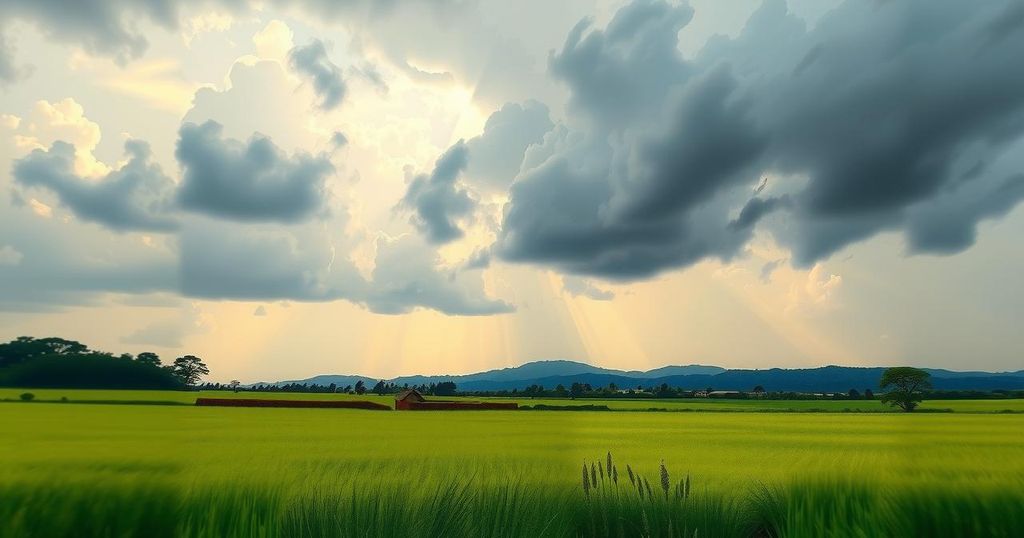Drier conditions in Brazil are raising concerns for the second-season corn crop, with rainfall deficits observed across most regions. Mato Grosso is closer to normal rainfall levels, while other areas see significant shortfalls. Forecasts predict limited rainfall through March, anticipated to maintain rather than improve soil moisture conditions. The situation may worsen if rainfall continues to fall below expectations, impacting crop yields.
Concerns surrounding drier conditions in Brazil have intensified over the past several weeks, particularly impacting the second-season corn crop (safrinha). While soybean harvesting is nearing completion, the safrinha corn producers across various states, including Paraná, Mato Grosso, Minas Gerais, and Piauí, depend on expected rainfall during March to replenish soil moisture. Thus far, rainfall levels have not met expectations, leading to apprehensions about corn cultivation.
According to DTN estimates, most of Brazil’s growing areas are facing 30-, 60-, and 90-day rainfall deficits. In contrast, Mato Grosso, Brazil’s leading safrinha corn-producing state, is nearing normal precipitation levels. However, other areas, especially in the east, are experiencing alarming deficits, recording rainfall totals as low as 20% of what is considered normal, with some regions receiving less than an inch of rain in the past month. This shortage poses significant risks to the early development of corn crops.
Though consistent rainfall could mitigate some moisture deficits, it may not suffice to address the drought conditions faced in several states. Much of the corn pollination occurs between mid- and late-April, coinciding with a decline in wet-season precipitation, therefore relying heavily on adequate subsoil moisture to foster kernel development and achieve satisfactory yields.
Soil moisture levels have diminished due to recent dry spells, and satellite data from NOAA and NASA reveal that large portions of the south-central, eastern, and northern growing areas—excluding Mato Grosso—are currently experiencing drought conditions. Forecasts predict a more active weather pattern for Brazil over the next week to ten days, with a stalled front expected to produce scattered showers across Mato Grosso and Minas Gerais through the end of March.
The upcoming rainfall amounts through March 30 are anticipated to vary, with general projections estimating 1 to 2 inches, and some particularly dry areas in Minas Gerais possibly receiving up to 3 inches. However, this precipitation remains below the historical averages, especially in regions like southern Goiás and southeastern Mato Grosso, where it only maintains current soil moisture without significantly replenishing it. Moreover, forecasts for April indicate a continuing trend of dry weather, further exacerbating the moisture deficit.
It is also critical to note that rainfall predictions along the central Brazil front have been frequently overestimated in recent days. Rather than producing widespread precipitation, only isolated showers have occurred, leading to total amounts far below initial projections. If this pattern of rainfall overestimation persists, the conditions for Brazilian agricultural producers may deteriorate further.
In summary, Brazil’s agricultural producers face significant challenges due to insufficient rainfall levels necessary for the growth of the safrinha corn crop. While some rain is forecasted, it appears inadequate to counter current drought conditions. With critical pollination periods approaching, the reliance on subsoil moisture becomes paramount. Consequently, both the short-term and long-term outlooks for rainfall do not inspire confidence, leaving producers at risk in the face of persistent dry conditions.
Original Source: www.dtnpf.com






